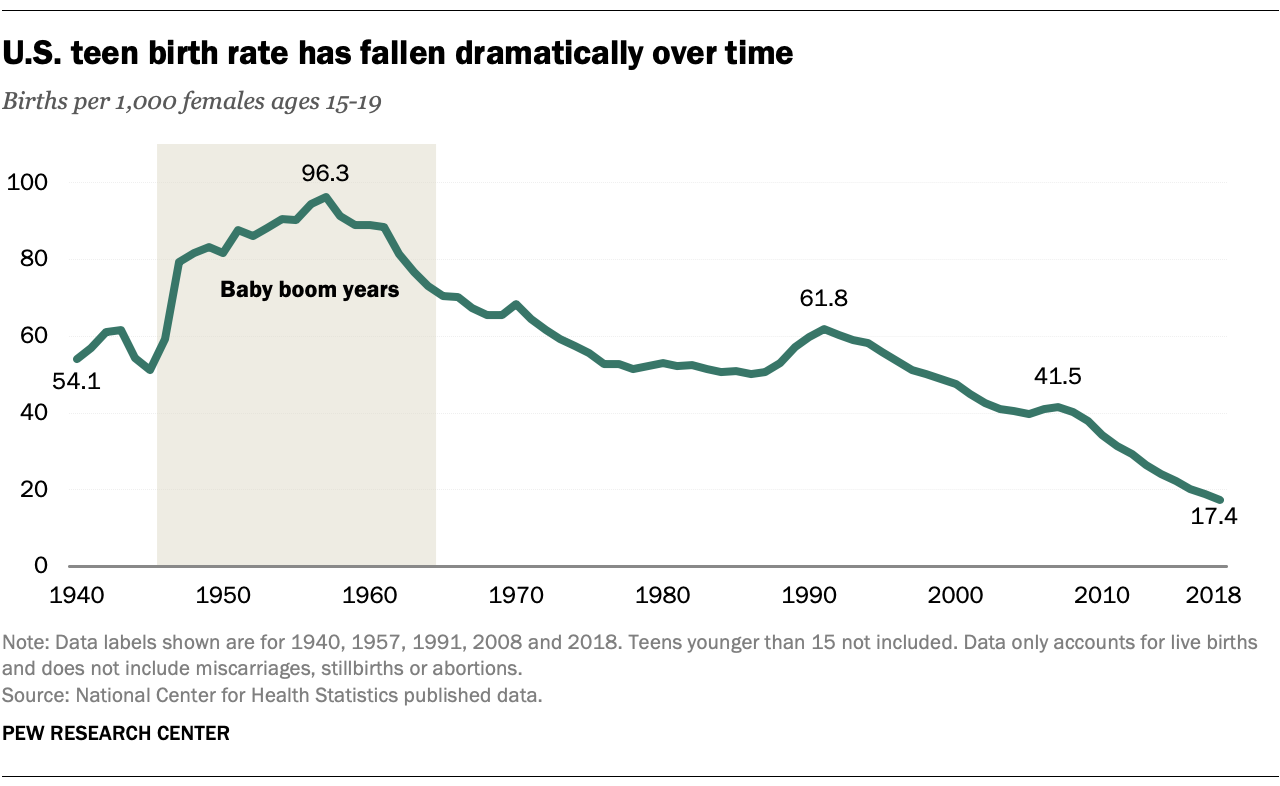
Teenage Pregnancy Rates in 2000: A Comprehensive Analysis
Introduction
Teenage pregnancy remains a significant public health concern in the United States, with far-reaching implications for both the young mothers and their children. In 2000, the national teen pregnancy rate stood at 79.1 per 1,000 females aged 15-19, a figure that has been steadily declining since the early 1990s. However, significant disparities exist across racial and socioeconomic groups, with certain populations facing disproportionately high rates of teenage pregnancy.
National Trends
The overall teen pregnancy rate in the United States has experienced a substantial decline over the past few decades. In 1990, the rate was 116.9 per 1,000 females aged 15-19, representing a significant reduction of 32.8% by 2000. This decline has been attributed to a combination of factors, including increased access to comprehensive sex education, improved contraceptive use, and a shift in societal norms surrounding teenage pregnancy.
Racial and Ethnic Disparities
Despite the overall decline in teen pregnancy rates, significant disparities persist across racial and ethnic groups. In 2000, the teen pregnancy rate for non-Hispanic black females was 146.6 per 1,000, more than twice the rate for non-Hispanic white females (65.5 per 1,000). Hispanic females also had a higher teen pregnancy rate (93.1 per 1,000) than non-Hispanic white females.
These disparities are rooted in a complex interplay of social, economic, and cultural factors. Black and Hispanic teenagers are more likely to live in poverty, experience educational challenges, and face limited access to healthcare and other resources. They are also more likely to be exposed to violence and other adverse life circumstances that can increase their risk of engaging in risky sexual behaviors.
Socioeconomic Factors
Socioeconomic status also plays a significant role in teenage pregnancy rates. Teenagers from low-income families are more likely to become pregnant than their more affluent peers. This disparity is likely due to a combination of factors, including limited access to education, healthcare, and other resources, as well as increased exposure to risk factors such as poverty, violence, and unstable housing.
Consequences of Teenage Pregnancy
Teenage pregnancy has a wide range of negative consequences for both the young mothers and their children. Young mothers are more likely to drop out of school, experience unemployment, and live in poverty. They are also at increased risk for health problems, including preterm birth, low birth weight, and postpartum depression.
Children born to teenage mothers face their own set of challenges. They are more likely to be born prematurely or with low birth weight, which can lead to a range of health problems. They are also more likely to experience developmental delays, cognitive impairments, and behavioral problems.
Prevention Strategies
Preventing teenage pregnancy requires a comprehensive approach that addresses the underlying social, economic, and cultural factors that contribute to the problem. Effective prevention strategies include:
- Comprehensive sex education: Providing teenagers with accurate and age-appropriate information about sexual health, contraception, and decision-making skills can help them make informed choices about their sexual behavior.
- Access to contraception: Ensuring that teenagers have access to a wide range of contraceptive methods, including condoms, birth control pills, and long-acting reversible contraceptives (LARCs), can help them prevent unintended pregnancy.
- Youth development programs: Programs that provide teenagers with support, guidance, and opportunities for personal growth can help them develop the skills and confidence they need to make healthy decisions about their sexual health.
- Community engagement: Involving community members, including parents, teachers, and healthcare providers, in efforts to prevent teenage pregnancy can create a supportive environment that encourages healthy decision-making.
Conclusion
Teenage pregnancy remains a significant public health concern in the United States, with far-reaching implications for both the young mothers and their children. While the overall teen pregnancy rate has declined in recent decades, significant disparities persist across racial and socioeconomic groups. Addressing these disparities and implementing effective prevention strategies are essential to reducing the incidence of teenage pregnancy and improving the health and well-being of young people.